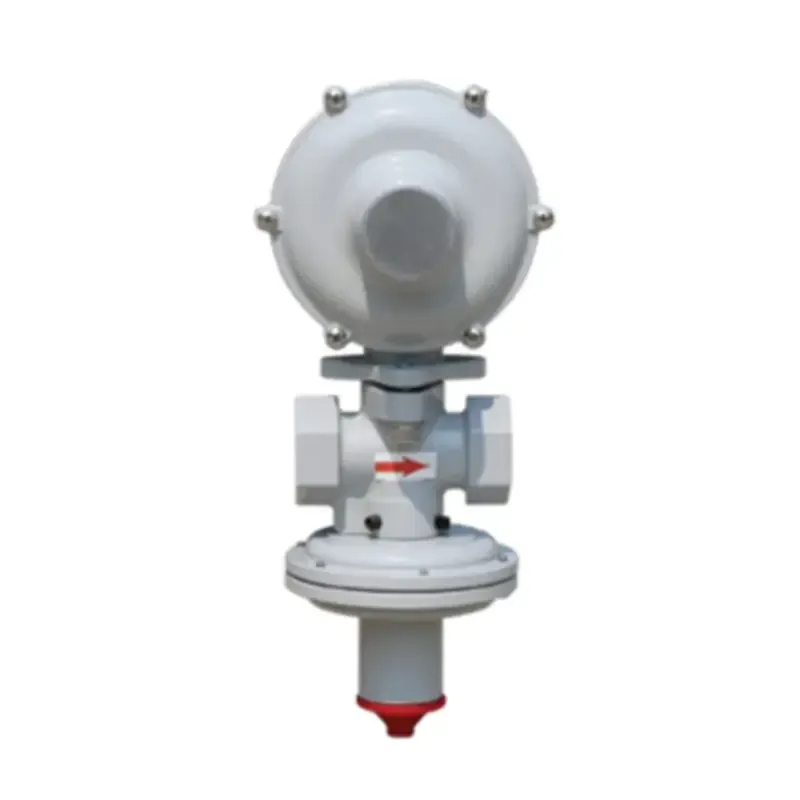
Dec . 10, 2024 16:10
Back to list
natural gas pressure reducer
Understanding Natural Gas Pressure Reducers An Essential Component in Gas Distribution
Natural gas is a crucial energy source that powers homes, businesses, and industries worldwide. However, the process of transporting and using natural gas requires careful management of its pressure. One vital piece of equipment that plays a significant role in this management is the natural gas pressure reducer. This article aims to explore the function, types, and importance of pressure reducers in the natural gas distribution system.
What is a Natural Gas Pressure Reducer?
A natural gas pressure reducer, also known as a pressure regulator, is a device designed to control the pressure of natural gas within a pipeline system. Its primary function is to reduce the high pressure of gas supplied from the main distribution line to a much lower pressure suitable for safe operation in residential, commercial, and industrial applications. By maintaining consistent pressure levels, these devices help ensure the reliable and efficient delivery of natural gas.
How Does a Natural Gas Pressure Reducer Work?
Natural gas is typically transported through pipelines at high pressures, which can range from 200 to 1,200 psi (pounds per square inch) or more. However, appliances and equipment that utilize natural gas, such as heaters, stoves, and boilers, generally require much lower pressures, usually around 0.25 psi for residential usage.
A pressure reducer functions by using a diaphragm or spring mechanism. The device senses the incoming gas pressure and automatically adjusts it to maintain a set output pressure. When the incoming pressure exceeds the desired level, the regulator reduces the pressure and allows the gas to flow at a stable rate. Conversely, if the pressure drops below the threshold, the regulator adjusts to compensate, ensuring a constant supply of gas.
Types of Natural Gas Pressure Reducers
There are several types of natural gas pressure reducers, each suited to specific applications
1. Single-Stage Regulators These are the most basic type of pressure reducer, used for applications where the pressure drop is not substantial. They are typically found in residential settings, ensuring a consistent supply of low-pressure gas.
natural gas pressure reducer

2. Two-Stage Regulators These regulators are employed in scenarios requiring greater precision in pressure control, such as in commercial and industrial applications. They feature two stages of pressure reduction, allowing for more stable operation and better response to fluctuations in incoming pressure.
3. Dome-Loaded Regulators These regulators utilize a dome filled with gas or air to control the pressure more effectively. The dome’s pressure acts against a spring, providing a highly responsive and stable pressure regulation system.
4. Electronic Regulators Modern advancements have led to the development of electronic pressure regulators that use sensors and actuators for precise control of gas pressure. These systems are commonly used in sophisticated industrial processes requiring stringent accuracy.
Importance of Natural Gas Pressure Reducers
The significance of natural gas pressure reducers cannot be overstated. They ensure safety by preventing overpressure situations that can lead to leaks, explosions, or other hazardous conditions. Maintaining the correct pressure also optimizes the performance of gas-burning appliances, improving their efficiency and lifespan.
Additionally, regulators play a critical role in minimizing gas wastage. By ensuring a constant and appropriate flow of gas, they reduce the risk of supply interruptions and maintain service reliability. In commercial settings, where downtime can lead to substantial losses, reliable pressure regulation is essential for operational continuity.
Furthermore, the regulatory compliance of gas systems often depends on the correct functioning of pressure reducers, as they help meet safety standards set by regulatory bodies. Regular maintenance and testing of these devices are necessary to ensure they operate within established guidelines.
Conclusion
Natural gas pressure reducers are an integral part of the gas distribution system, facilitating safe and efficient delivery of natural gas to various applications. By controlling gas pressure effectively, these devices enhance safety, improve efficiency, and ensure compliance with regulations. Understanding their function and importance can help users appreciate the technology involved in energy distribution and the role it plays in everyday life. As the demand for natural gas continues to grow, innovations in pressure regulation will undoubtedly evolve, leading to even greater efficiencies and safety in the gas industry.
Next:
Latest news
-
Safety Valve Spring-Loaded Design Overpressure ProtectionNewsJul.25,2025
-
Precision Voltage Regulator AC5 Accuracy Grade PerformanceNewsJul.25,2025
-
Natural Gas Pressure Regulating Skid Industrial Pipeline ApplicationsNewsJul.25,2025
-
Natural Gas Filter Stainless Steel Mesh Element DesignNewsJul.25,2025
-
Gas Pressure Regulator Valve Direct-Acting Spring-Loaded DesignNewsJul.25,2025
-
Decompression Equipment Multi-Stage Heat Exchange System DesignNewsJul.25,2025

